
HOME
INTRO
SYMBOLS
ALMANAC
ECONOMY
GEOGRAPHY
STATE MAPS
PEOPLE
FORUM
NEWS
COOL SCHOOLS
STATE QUIZ
STATE LINKS
BOOK STORE
MARKETPLACE
GUESTBOOK
CONTACT US


Tweet
Double click on word for definition.
South Carolina State Heritage Work Animal
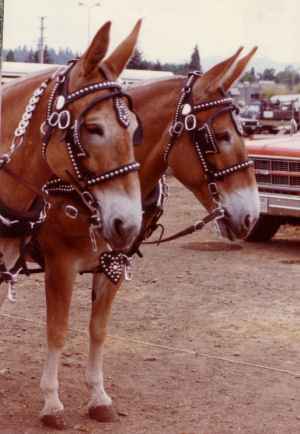
State Heritage Work Animal: Mule
Courtesy: American Mule and Donkey Society
The offspring of a male donkey (a jack) and a female horse (a mare) is called a mule.
In January, 2010, Senate Bill No. 1030 (SB1030) was introduced in the South Carolina State Senate. It proposed that that marsh tacky be adopted as the state's official heritage horse.
It was passed by a vote of the Senate on April 20, 2010 and then sent to the House for consideration.
In the House, SB1030 was amended to add the mule as the official state heritage work animal.
Because the House added the mule to the bill, passed by the Senate in its original form, the amended SB1030 had to be returned to the Senate for another review. The Senate accepted the amended bill, now adopting the marsh tacky as the official heritage horse and the mule as the official heritage work animal.
When Governor Mark Sanford signed SB1030 on June 11, 2010, the mule was adopted as South Carolina's official state heritage work animal along with the adoption of the marsh tacky as the state's official heritage horse.
A BILL
TO AMEND THE CODE OF LAWS OF SOUTH CAROLINA, 1976, BY ADDING SECTION 1-1-714 SO AS TO DESIGNATE THE MARSH TACKY AS THE OFFICIAL STATE HERITAGE HORSE OF SOUTH CAROLINA.
Amend Title To Conform
Be it enacted by the General Assembly of the State of South Carolina:
SECTION 1. The General Assembly finds:
(1) The Marsh Tacky, a rare colonial Spanish horse breed unique to South Carolina, has played a significant role in South Carolina's history. After abandonment by the Spanish on the South Carolina Sea Islands and along the South Carolina coast some five hundred years ago, the Marsh Tacky survived on its own and developed into a unique strain of colonial Spanish horse. These tough, little horses assisted our forefathers in the development and defense of our State and were the major source of transportation in the Lowcountry before the introduction of the automobile. Marsh Tackies were important to the Gullah community and became an integral part of agricultural life for Lowcountry families. Marsh Tackies were used wherever horsepower was needed; to pull plows and wagons, herd cattle, hunt wild game, deliver the mail, transport families, and as loyal, sturdy war mounts. Most Lowcountry families had Marsh Tackies in their fields or gardens.
(2) During the American Revolution, Marsh Tackies assisted in the victories of the famous 'Swamp Fox' General Francis Marion, whose troops of 'Irregulars' had the advantage of being mounted on small, agile horses that were superbly adapted to the Lowcountry's rough, swampy terrain. Marsh Tackies required little care from the troops, were able to travel long distances without fatigue, and survived on forage, reducing the need for supply wagons carrying grain. The sure-footed Marsh Tacky enabled the militia to out maneuver the British troops who rode larger European horse breeds that could not traverse the swampy forests.
(3) Marsh Tackies served the southern Confederate cavalry during the Civil War. Unlike northern troops who were issued horses, southern recruits were often required to provide their own mounts, which were trained and familiar with their riders, giving an early advantage to the southern forces.
(4) In World War II, Marsh Tackies were used by the Coast Guard's Mounted Beach Patrol to protect our mainland from enemy spies and saboteurs. The 'Beach Pounders' who patrolled the southeastern shore were trained at the Mounted Beach Patrol and Dog Training Center in Hilton Head, South Carolina, and patrolled the coast from Florida to North Carolina.
(5) Marsh Tackies have little changed since the colonial period. Relative isolation on the Sea Islands and secluded areas of the Lowcountry, along with owner dedication to the preservation of the breed, has allowed the Marsh Tacky to remain relatively untouched. Owners often comment on the built-in 'woods sense' of the breed and how the horses have a natural way of traversing water obstacles and swamps. Many horses display characteristics and primitive markings carried by their Spanish ancestors including dorsal stripes, zebra leg stripes, and lengthy manes and tails.
(6) In 2007, Marsh Tacky owners and enthusiasts across the State formed the Carolina Marsh Tacky Association to preserve and promote the history and heritage of the Marsh Tacky horse. The association works closely with the American Livestock Breeds Conservancy to provide ongoing registry, stud book, and breeding program to ensure the survival of the Marsh Tacky.
(7) With its rich heritage, resilience, and perseverance, the Marsh Tacky embodies the very spirit of South Carolina. The Marsh Tacky is uniquely of South Carolina and remains a living piece of history in its native State, a claim that no other breed can make. The Marsh Tacky has earned the title of State Heritage Horse of South Carolina.
SECTION 2. Chapter 1, Title 1 of the 1976 Code is amended by adding:
"Section 1-1-714. The Marsh Tacky is designated as the official State Heritage Horse of South Carolina."
SECTION 3. Chapter 1, Title 1 of the 1976 Code is amended by adding:
"Section 1-1-714A. The mule is hereby designated as the official State Heritage Work Animal of South Carolina."
SECTION 4. This act takes effect upon approval by the Governor.
----XX----
South Carolina Law
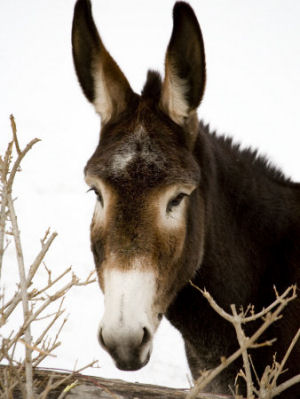
State Heritage Work Animal: Mule
Photographs, posters, prints
The following information was excerpted from the South Carolina Code of Laws, Title 1, Chapter 1, Article 9, Section 1-1-714A.
Title 1 - Administration of the Government
CHAPTER 1. GENERAL PROVISIONS
ARTICLE 9. STATE EMBLEMS, PLEDGE TO STATE FLAG, OFFICIAL OBSERVANCES
SECTION 1-1-714A.
SECTION 1-1-714A. Official state heritage work animal.
The mule is hereby designated as the official State Heritage Work Animal of South Carolina.
Sources...
"Senate Bill No. 1031." State of South Carolina. Columbia: State of Carolina, 2010. Web. 25 May 2011.
"South Carolina Code of Laws." State of South Carolina. Columbia: State of South Carolina, 2011. Web. 21 May 2011.
Shearer, Benjamin F. and Barbara S. State Names, Seals, Flags and Symbols: A Historical Guide Third Edition, Revised and Expanded. Westport, Conn: Greenwood Press, 3 Sub edition, 2001.
Additional Information
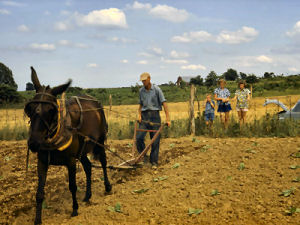
Farmer and His Mule Cultivate Tobacco Field
Photographs, posters, prints
What is a mule?: Explanation from the American Mule and Donkey Society.
Love Longears!: Website of the American Mule and Donkey Society, Lewisville, Texas.
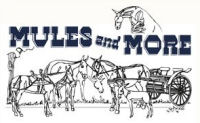
Mules and More: Mules and More Magazine has been published monthly for mule and donkey enthusiasts since 1980. Our pages cover everything from training articles to show results and features trail reviews from across the country. Every equine enthusiast can find useful articles and interesting columns in this magazine.
Equus asinus (Ass or donkey): The University of Michigan Museum of Zoology: Animal Diversity Web.
Equus caballus (Horse): The University of Michigan Museum of Zoology: Animal Diversity Web.
Equus asinus - (Linnaeus, 1758), Ass: A network connecting science with conservation - NatureServe Explorer: An Online Encyclopedia of Life.
Equus caballus - (Linnaeus, 1758), Horse: A network connecting science with conservation - NatureServe Explorer: An Online Encyclopedia of Life.
Equus asinus Linnaeus, 1758: Integrated Taxonomic Information System (ITIS) Here you will find authoritative taxonomic information on plants, animals, fungi, and microbes of North America and the world.
Equus caballus Linnaeus, 1758: Integrated Taxonomic Information System (ITIS) Here you will find authoritative taxonomic information on plants, animals, fungi, and microbes of North America and the world.
State Animals: Complete list of official state animals from NETSTATE.COM.
More symbols & emblems: Complete list of official South Carolina state symbols from NETSTATE.COM.
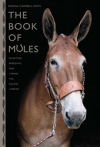
The Book of Mules
Donna Campbell Smith
The Book of Mules: Selecting, Breeding, and Caring for Equine Hybrids, by Donna Campbell Smith. 136 pages. Publisher: Lyons Press (December 16, 2008) Information about of mules and other equine hybrids such as hinneys and zebra-crosses, as well as information about how to choose, breed, and use them.
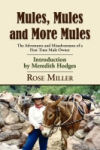
Mules, Mules,
and More Mules
Rose Miller
Mules, Mules and More Mules: The Adventures and Misadventures of a First Time Mule Owner, by Rose Miller. 286 pages. Publisher: Booklocker.com, Inc. (October 23, 2010) The Grand Canyon mules were accustomed to many and varied riders, and seemed not to care that their passengers were slightly nervous; they had seen these rocky paths many times before and would see them many more.
Rose Miller was among those riders going down Bright Angel Trail on their trustworthy mules to the Phantom Ranch below where she and her fellow travelers would spend the night, and travel back to the top on the Kaibab trail the next day.
By the time Rose returned home to northern Indiana, she had become totally enthralled with those captivating and unique equine hybrids and was determined to find the perfect, safe and dependable mule to ride in her ?senior years.? She had owned, shown, bred and trained horses for nearly forty years, and now was ready for the easy life.
What happens next constitutes the story of Mules, Mules and More Mules, as Rose searches for the ideal long-eared companion. Because of her bad back, a smooth-gaited mule that would allow her to sit back and enjoy the ride was desired, but not all was smooth going. Continue along for the trip as she uses her engaging around-the-campfire-story-telling style to introduce her mules: Mirabella, Samson, Maybellene, Ruth Ann, Susie, and Lucinda. You will laugh out loud as she learns the hard way, mules and horses are different, and are not perfect.

